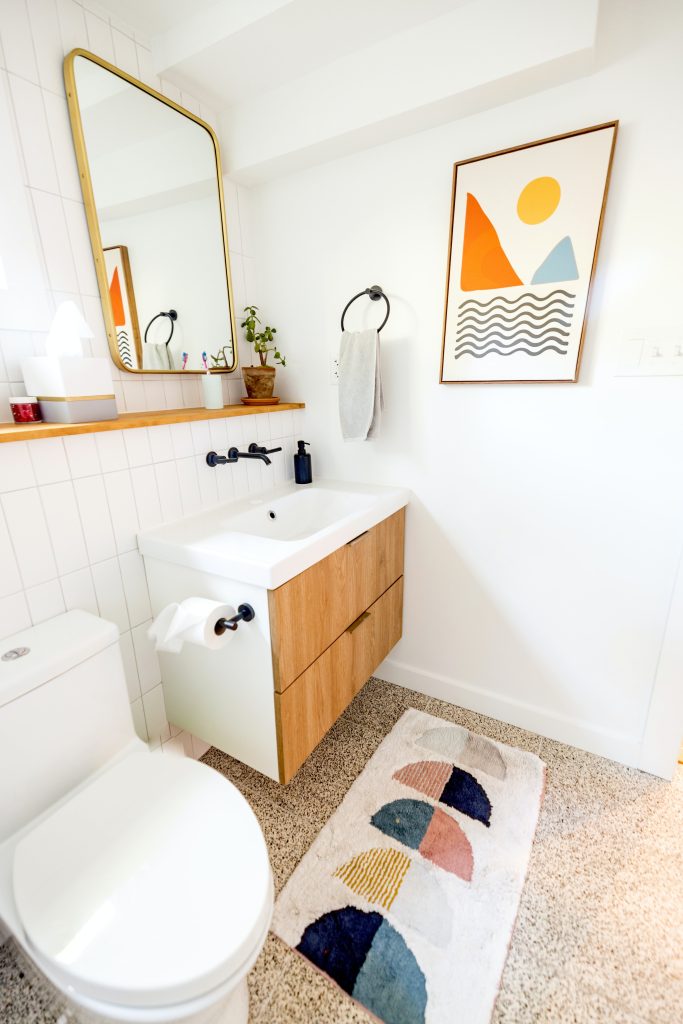When it comes to designing your living room, one of the most important decisions you’ll have to make is choosing the right color scheme for your decor. The color scheme you choose can greatly impact the overall look and feel of your space, setting the mood and creating a harmonious atmosphere. But with so many options to choose from, it can be overwhelming to know where to start. Fear not, because in this article, you’ll discover some practical tips and guidelines to help you choose the perfect color scheme that suits your style, enhances your space, and brings joy to your living room.
Table of Contents
ToggleUnderstanding the Basics of Color
The psychology of color
Understanding the psychology of color is essential when it comes to choosing the right color scheme for your living room. Colors have the power to evoke emotions and influence moods. For example, warm colors like red, orange, and yellow can create a sense of energy and excitement, while cool colors like blue, green, and purple can promote relaxation and calmness. It is important to consider the desired atmosphere you want to create in your living room before deciding on a color scheme.
Color theory for interior design
Color theory is the foundation of creating visually appealing and harmonious color schemes. It involves understanding concepts such as complementary colors, analogous colors, and monochromatic colors. Complementary colors are opposite each other on the color wheel and provide a vibrant contrast. Analogous colors are adjacent to each other on the color wheel and create a harmonious and cohesive look. Monochromatic colors involve using different shades and tints of a single color to create a sophisticated and elegant design.
Color wheel and its significance
The color wheel is a visual representation of how colors relate to each other. It is a valuable tool in selecting colors for your living room decor. The color wheel consists of primary colors (red, blue, and yellow), secondary colors (orange, green, and purple), and tertiary colors (the combination of primary and secondary colors). By understanding the relationship between colors on the color wheel, you can easily create color schemes that are visually appealing and balanced.
Factors to Consider
Existing elements in the room
When choosing a color scheme for your living room, it is important to consider the existing elements in the room, such as furniture, flooring, and wall finishes. You want to create a cohesive and harmonious look, so it’s crucial to choose colors that complement or coordinate with the existing elements. Consider the undertones of furniture and flooring materials to ensure that the colors you choose will work well together.
Natural lighting
The amount and quality of natural lighting in your living room can greatly impact the way colors appear. Natural light can enhance certain colors and make others appear dull or washed out. Take note of the direction and intensity of sunlight throughout the day. If your living room receives ample natural light, you may opt for lighter colors to maximize the brightness. Conversely, if your living room lacks natural light, you may want to choose warmer colors or incorporate strategic lighting to create a cozy and inviting atmosphere.
Size of the living room
The size of your living room is another important factor to consider when choosing a color scheme. Lighter colors can make a small living room feel more spacious and open, while darker colors can add depth and richness to a larger space. If your living room is on the smaller side, you may want to choose lighter shades to create an illusion of space. For larger living rooms, you have the freedom to experiment with both light and dark colors.
Functionality and desired mood
Consider how you will be using your living room and the desired mood you want to achieve. If you envision your living room as a space for relaxation and tranquility, consider using soothing and calming colors such as blues and greens. On the other hand, if you want to create an energetic and vibrant ambiance, you may opt for bold and vibrant colors like reds or oranges. Understanding the purpose and desired mood of your living room will guide you in selecting the right color scheme.
Determining Your Style
Identifying your personal style
Before diving into the world of color schemes, it is important to identify your personal style. Are you drawn to modern and minimalist designs, or do you prefer a more traditional and cozy aesthetic? Understanding your personal style will help you choose colors that align with your overall design vision. Consider your preferences in terms of color, texture, and overall ambiance.
Considering the architectural style
Another aspect to consider when determining your color scheme is the architectural style of your home. Different architectural styles lend themselves better to certain color schemes. For example, a contemporary home may benefit from a sleek and monochromatic color scheme, while a farmhouse-style home may call for warm and rustic colors. Take into account the architectural details and features of your home and choose colors that enhance the overall style.
Exploring popular design themes
If you’re unsure of where to start with your color scheme, exploring popular design themes can provide inspiration. Look for design styles that resonate with you, whether it’s coastal, industrial, Scandinavian, or bohemian. Each design theme has its own color palette that can be tailored to suit your personal taste. By exploring popular design themes, you can gather ideas for colors and patterns that you may want to incorporate into your living room decor.
Creating Harmonious Color Schemes
Monochromatic color scheme
A monochromatic color scheme involves using different shades, tints, and tones of a single color. This creates a harmonious and visually cohesive look. For example, if you choose blue as your main color, you can incorporate various shades of blue, such as navy, sky blue, and baby blue. This color scheme is elegant and understated, perfect for creating a serene and sophisticated living room.
Analogous color scheme
An analogous color scheme involves using colors that are adjacent to each other on the color wheel. This creates a harmonious and cohesive look while offering more variety than a monochromatic scheme. For example, you can choose a color like green and incorporate shades of green, yellow-green, and blue-green into your living room decor. Analogous color schemes are pleasing to the eye and offer a sense of balance and unity.
Complementary color scheme
A complementary color scheme involves using colors that are opposite each other on the color wheel. This creates a high-contrast and vibrant look. For example, you can pair blue with orange or red with green. Complementary color schemes can be bold and eye-catching, making them great for creating a focal point in your living room. However, be mindful of balancing the colors to avoid overwhelming the space.
Split-complementary color scheme
A split-complementary color scheme is a variation of the complementary scheme that involves using a base color and the two colors adjacent to its complementary color. This creates a balanced look with a slightly less contrasting effect. For example, you can pair blue with yellow-orange and yellow-green. Split-complementary color schemes offer a sense of harmony and allow for more versatility in color choices.
Triadic color scheme
A triadic color scheme involves using three colors that are evenly spaced on the color wheel. This creates a vibrant and balanced look. For example, you can choose yellow, blue, and red as your triadic colors. Triadic color schemes are visually striking and can add excitement and interest to your living room decor. However, be mindful of balancing the intensity of the colors to avoid overwhelming the space.
Tetradic color scheme
A tetradic color scheme involves using four colors that are two sets of complementary colors. This creates a rich and dynamic color scheme. For example, you can pair blue and orange with green and red-violet. Tetradic color schemes offer a wide range of color combinations and allow for creativity and experimentation. However, be cautious when using multiple bold colors to maintain a balanced and cohesive look.
Using Neutrals and Accent Colors
The importance of neutrals
Neutrals play a crucial role in any color scheme as they provide a sense of balance and allow other colors to shine. They act as a backdrop and create a cohesive look. Neutrals include shades of white, beige, gray, and brown. By incorporating neutrals into your living room decor, you can create a timeless and versatile space that can easily be updated with accent colors.
Choosing the right neutral
When choosing neutral colors, consider the undertones and the overall atmosphere you want to create. Warm neutrals like beige and taupe create a cozy and inviting feel, while cooler neutrals like gray and white can create a modern and sleek look. Take into account the existing elements in your living room and choose neutrals that complement or enhance the overall color scheme.
Adding accent colors for depth and interest
Accent colors play an important role in adding depth and interest to your living room decor. They can be used sparingly to create focal points or used more generously to create a vibrant and energetic atmosphere. Accent colors can be bolder and brighter than the main colors in your scheme, creating a visually appealing contrast. Consider using accent colors in textiles, artwork, or decorative accessories to add pops of color and create visual interest.
Considering the Room’s Purpose
Relaxing and tranquil atmosphere
If you want to create a relaxing and tranquil atmosphere in your living room, consider using cool, soothing colors. Blues, greens, and purples are known to promote calmness and relaxation. Opt for lighter shades of these colors to create a serene and peaceful environment. Incorporate natural textures and materials to enhance the tranquil feel of the space.
Energetic and vibrant ambiance
For a more energetic and vibrant ambiance, consider using bold and vibrant colors such as reds, oranges, and yellows. These warm colors create a sense of energy and excitement. Incorporate patterns and textures to add visual interest and create a lively atmosphere. Be mindful of balancing the intensity of the colors to avoid overwhelming the space.
Sophistication and elegance
To create a sophisticated and elegant living room, opt for a neutral color scheme with touches of rich colors. Shades of gray, beige, and cream can provide a timeless backdrop, while deep jewel tones like emerald green or sapphire blue can add a pop of color and sophistication. Incorporate luxurious materials like velvet or silk to enhance the elegant feel of the space.
Warm and cozy feel
If you want your living room to feel warm and cozy, consider using warm colors like earth tones and shades of brown. These colors create a sense of comfort and coziness. Incorporate soft textures and materials like knitted blankets or plush rugs to enhance the warm and inviting atmosphere. Additionally, consider incorporating warm lighting fixtures to create a cozy ambiance.
Working with Color Intensity
Psychological effects of color intensity
Color intensity refers to the brightness or saturation of a color. Different levels of color intensity can evoke different emotions and moods. Bright and bold colors can create a sense of energy and excitement, while muted and subdued shades can promote calmness and relaxation. Consider the desired mood you want to achieve in your living room and choose colors with appropriate intensity levels.
Using bold and vibrant colors
Bold and vibrant colors can add a sense of drama and personality to your living room decor. Reds, oranges, and yellows are great options for creating a bold and energetic look. These colors can be used as accent colors or as the main color scheme. Pair bold colors with neutrals to create a balanced and visually appealing contrast. Be mindful of the size and lighting of your living room when using bold colors to avoid overwhelming the space.
Opting for muted and subdued shades
Muted and subdued shades can create a calming and relaxed atmosphere in your living room. Pastel colors like soft pinks, light blues, and pale yellows are excellent choices for creating a serene and tranquil space. These colors work well with neutrals, creating a harmonious and understated color scheme. Consider incorporating soft textiles and natural materials to enhance the soothing feel of the space.
Sampling and Testing Colors
Importance of sampling
Before committing to a specific color scheme, it is crucial to sample and test the colors in your living room. Colors can appear differently under various lighting conditions and in different-sized spaces. Sampling allows you to see how the colors interact with the existing elements in your living room and how they make you feel. It is recommended to sample the colors on a small section of the wall and observe them in different lighting conditions throughout the day.
Using swatches and paint samples
Swatches and paint samples are handy tools when sampling colors for your living room decor. Paint manufacturers offer small swatches or paint samples that you can apply to your walls or hold against your existing elements to see how the colors work together. Swatches and samples allow you to compare different shades and intensities and make an informed decision based on how they look in your specific space.
Observing colors under different lighting conditions
Lighting plays a significant role in how colors appear in a space. Natural and artificial lighting can have different color temperatures that affect the way colors are perceived. Observe the sampled colors in your living room throughout the day, considering the morning, afternoon, and evening lighting conditions. Pay attention to any significant changes in color appearance and consider how they align with your desired mood and atmosphere.
Considering Trends and Timelessness
Balancing trends with longevity
When choosing a color scheme for your living room, it is essential to strike a balance between following current design trends and creating a timeless space. Trends come and go, and what is fashionable today may become outdated in a few years. Consider incorporating trendy colors through accessories and interchangeable elements to easily update your decor as trends change. Opt for classic and neutral colors for larger, more permanent elements in your living room.
Exploring popular color trends
Exploring popular color trends can provide inspiration and help you stay up-to-date with the latest design styles. Each year, various color authorities release their color of the year, which can guide you in selecting on-trend colors. However, keep in mind that trends are subjective, and it’s important to choose colors that you personally connect with and that evoke the desired mood and atmosphere in your living room.
Choosing timeless color palettes
If you prefer a timeless and enduring color scheme for your living room, consider classic palettes that have stood the test of time. Earth tones, neutrals, and shades of white are timeless options that create a versatile backdrop for any design style. These colors are easy to pair with other colors and materials, making them a safe and reliable choice. Tap into timeless color combinations like black and white or navy and white for a sophisticated and elegant look.
Seeking Professional Advice
Consulting with interior designers
If you find yourself overwhelmed or unsure about choosing the right color scheme for your living room, it may be beneficial to consult with an interior designer. Interior designers have extensive knowledge and experience in color selection and can provide valuable guidance based on your personal style, existing elements, and desired atmosphere. They can help you narrow down options and create a cohesive and visually pleasing living room decor.
Utilizing online color scheme tools
Online color scheme tools can be helpful resources when exploring different color options for your living room. These tools allow you to experiment with various color combinations and visualize how they will look in your space. They often provide preselected color palettes and the ability to create custom palettes based on your preferences. Take advantage of these tools to gain inspiration and refine your color choices.
Getting inspiration from design professionals
Design professionals, including interior decorators and color consultants, can offer invaluable inspiration and advice when it comes to choosing a color scheme. Follow design professionals and influencers on social media platforms or browse design magazines and websites to gather ideas and see how colors are used in various spaces. However, always remember to tailor the inspiration to your personal style and the unique features of your living room.








